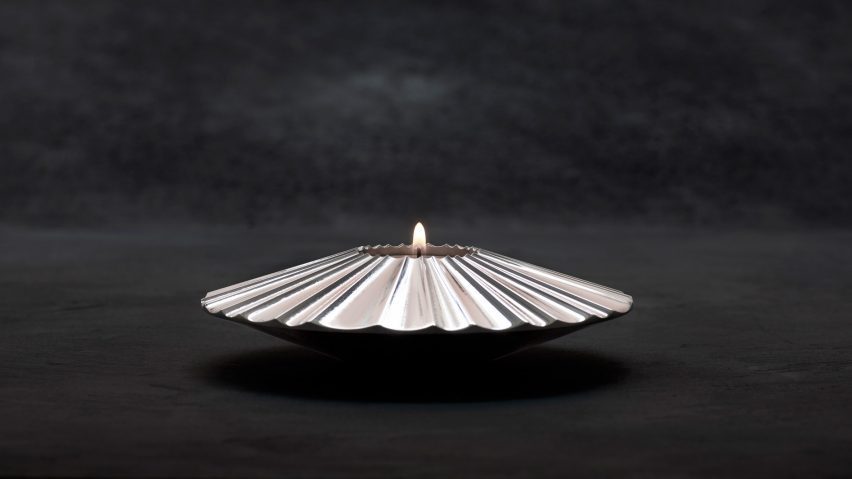Swedish designer Lena Bergström has created the world's first object made from steel produced without creating carbon emissions.
The candle holder, pictured above, was unveiled last week by Swedish steelmaker SSAB, which has produced the first fossil-free batch of the alloy.
“The candle holder, with its softly pleated rays beaming out from the candle, symbolizes the light at the end of the tunnel," said Bergström. "It is a symbol of hope. A piece of the future.”
SSAB intends to convert its factory at Oxelösund in Sweden to fossil-free production in 2025 and begin commercial production in 2026.
"The first fossil-free steel in the world is not only a breakthrough for SSAB," said SSAB CEO and president Martin Lindqvist. "It represents proof that it's possible to make the transition and significantly reduce the global carbon footprint of the steel industry."
"We hope that this will inspire others to also want to speed up the green transition."
Fossil-free steel to be used by Volvo
Last week SSAB delivered the first batch of emissions-free steel to Swedish carmaker Volvo, which will use it to explore how to reduce its own supply-chain emissions.
Volvo estimates that steel accounts for around 35 per cent of the emissions caused by the production of a petrol-powered car and 20 per cent of an electric vehicle.
"As we continuously reduce our total carbon footprint, we know that steel is a major area for further progress," said Håkan Samuelsson, chief executive at Volvo.
"The collaboration with SSAB on fossil-free steel development could give significant emission reductions in our supply chain."
To produce the steel, SSAB heated a blast furnace by burning "green" hydrogen instead of coal and coke using a process called Hydrogen Breakthrough Ironmaking Technology (HYBRIT).
Unlike "blue" hydrogen, which is extracted from fossil fuels and which generates carbon emissions, green hydrogen is obtained via the electrolysis of water, producing no emissions.
The innovation could help decarbonise the steel industry, which currently accounts for around seven per cent of global emissions and produces two tonnes of greenhouse gases for each tonne of steel.
Conversion to HYBRIT to reduce national emissions
Once SSAB converts its plant to HYBRIT, greenhouse gas emissions will be reduced by 90 per cent, it said. This will reduce Sweden's national emissions by two to three per cent, according to SSAB Oxelösund head of production Era Kapilashrami.
SSAB has steelmaking plants in Sweden, Finland and the US and intends to convert them all to HYBRIT in the future. It plans to phase out its other steel products and be completely free of fossil fuels by 2045.
Doing so could reduce Sweden’s total CO2 emissions by around ten per cent and Finland’s by approximately seven per cent.
“It’s a crucial milestone and an important step towards creating a completely fossil-free value chain from mine to finished steel," said Jan Moström, president and CEO of LKAB, a mining group that partnered with SSAB and renewable-energy company Vattenfall on the HYBRIT project.
LKAB mines and processes iron ore using machinery powered by bio-oil, a synthetic fuel produced by heating biomass in a reactor without oxygen.
Lindqvist predicts the automative and heavy transport industries will be early adopters of fossil-free steel, followed by construction companies.
There is pressure on Sweden's high-polluting industries to decarbonise. Recently, the country's biggest cement factory was stripped of its licence to mine limestone on environmental grounds, affecting the country's construction sector.

